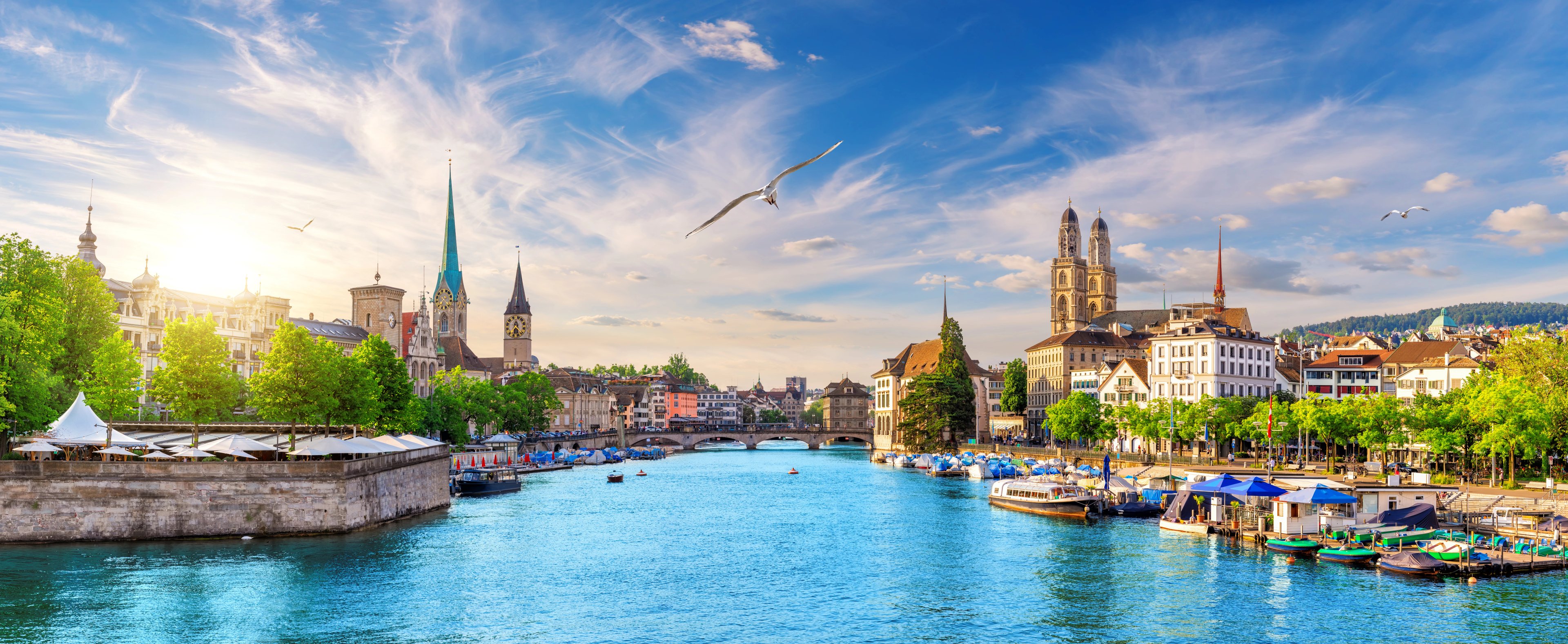Must-See Plaatsen in Zwitserland
Ontdek de beste natuurlijke en culturele bezienswaardigheden van Zwitserland — van meren en wijngaarden tot middeleeuwse steden en alpine passen die de rit waard zijn.

Fietsen door Zwitserland gaat niet alleen om de ritten — het gaat om alles wat je onderweg tegenkomt. Steden aan het meer, bergpassen, middeleeuwse dorpen en UNESCO-werelderfgoed komen mijl na mijl in beeld, waardoor elke route een gevoel van ontdekking geeft.
In de vijf belangrijkste fietregio's van het land zijn dit de plaatsen die Zwitserland definiëren — van wijngaardterrassen boven het Meer van Genève tot de geplaveide straten van Luzern en de serene oevers van het Bodenmeer.

Hier zijn de must-see hoogtepunten die elke fietser onderweg moet ervaren:
1. Bodenmeer & Noordelijke Meren
Vlakke paden langs het meer, wijngaardhellingen en middeleeuwse steden maken de regio rond het Bodenmeer tot een van Europa's meest ontspannen en pittoreske fietsbestemmingen. Gedeeld door Zwitserland, Duitsland en Oostenrijk, combineert het schilderachtige schoonheid met moeiteloos fietsen en grensoverschrijdende cultuur.
Deze klassieke route cirkelt rond het meer en verbindt charmante steden, kastelen en havens — elk biedt een glimp van de mix van Zwitserse precisie en Beierse warmte in de regio. Onderweg springen de volgende hoogtepunten eruit:
2. Centraal Zwitserland (Lucerne & Omgeving)
In het hart van het land ligt Centraal Zwitserland, waar het verhaal van Zwitserland — en enkele van de meest iconische landschappen — samenkomen. Meren, pré-alpine heuvels en charmante stadjes creëren een regio die cultuur en landschap perfect in balans brengt.
Deze route vangt de essentie van Zwitserland in het klein — fjordachtige meren, glooiende beklimmingen en ansichtkaart-perfecte stadjes. Het is ideaal voor degenen die zachte fietstochten willen combineren met culturele stops en ontspanning aan het meer. Mis deze belangrijke hoogtepunten niet:
3. Westelijke Meren & Wijngaarden (Genèvemeer & Vaud)
Deze regio, die zich uitstrekt van Zürich tot Lausanne, verbindt de taalkundige en culturele werelden van Zwitserland — van Duitstalige steden tot de door het Frans beïnvloede merenkusten van Vaud.
Terrasvormige wijngaarden, kuuroorden en promenade langs het meer maken het tot een paradijs voor fietsers die genieten van schilderachtige diversiteit en een vleugje Zwitserse cultuur om elke hoek.
Deze cross-country reis volgt een zacht terrein door historische steden en wijngaardvalleien, en vangt de elegantie en variëteit van Zwitserland in één route. Deze opvallende plaatsen onthullen het karakter van de regio:
4. De Hoge Alpen & Graubünden
De meest dramatische landschappen van Zwitserland wachten in de oostelijke kantons Graubünden en het Engadin-dal — waar hooggelegen wegen, gletsjer valleien en afgelegen dorpen de bergziel van het land definiëren. Elke beklimming wordt beloond met een panoramisch uitzicht, historische steden en een diep gevoel van alpine stilte.
Deze rondleidingen volgen de legendarische passen en tijdloze valleien van Zwitserland, waarbij natuurlijke schoonheid wordt verbonden met eeuwen van culturele erfgoed. Onderweg kom je:
5. Ticino & de Zuidelijke Alpen
De zuidelijke rand van Zwitserland brengt een vleugje van de Middellandse Zee naar de Alpen — een plek waar meren glinsteren onder palmbomen, piazza's bruisen van het caféleven, en de lucht warmer en relaxter aanvoelt. Dit is waar alpine avontuur samenkomt met Italiaanse flair, omgeven door zonneschijn en een ontspannen charme.
Deze reis verbindt meren, bergpassen en grensoverschrijdende landschappen, en volgt een route van Genève naar de zonovergoten regio's in het zuiden. Op deze route ervaren rijders de perfecte mix van cultuur, klimaat en landschap met stops zoals:
Waar naartoe?
Van glinsterende meren en wijngaard-lijn valleien tot hoge bergpassen en zonnige zuidelijke steden, de fietsroutes van Zwitserland brengen cultuur, landschap en avontuur in perfecte balans.

Verken ons volledige aanbod van fietstochten in Zwitserland om de route te vinden die bij jouw rijstijl past, of neem contact op en wij helpen je een route te plannen die alle must-see plekken onderweg omvat.
.svg)
UITGEKOZEN AVONTUREN
Alleen de beste avonturen over de hele wereld, uitgekozen door ons team met een grondige kennis van de regio's.

ZELFSTANDIG REIZEN
Verken zelfstandig en vol vertrouwen terwijl wij achter de schermen alles draaiende houden.
.svg)
WAARDEER JE TIJD
Met alles op je bord, laat ons de vakantieplanning regelen, zodat je kostbare tijd precies blijft waar je hem nodig hebt.
VERTROUWD DOOR VELEN
We zijn een financieel beschermd bedrijf dat sinds 2014 actief is, en met duizenden tevreden klanten in het verleden, zetten we jou nog steeds op de eerste plaats.
.jpg&w=3840&q=75)






























